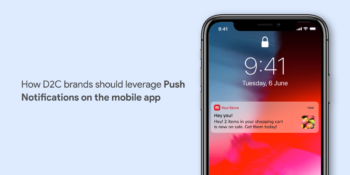Creating a mobile application for your store is the best thing that you can do to win an edge over your competitors. Nevertheless, it is also important to ensure the quality of the mobile apps that you offer to your customers. Performing mobile application testing ensures that the product reaches the end-user in the best possible quality and proper functioning of the apps. It is also important to have the right strategy and tools for each type of mobile testing to assure the best performance, security, and UI.
What is mobile application testing?
Mobile application testing refers to the process by which mobile apps created for mobile devices are tested for functionality, usability, and consistency. It is either done manually or with automation. This process makes sure that your app survives in today’s market with its high-end quality and smooth functionality.
Different types of mobile apps
Native Apps: Apps that are developed for a particular platform or operating system (OS) are called Native apps. Focusing on a single OS gives native apps the advantage of being faster and more reliable. This improves its performance and makes them costly to maintain.
Mobile web apps: Mobile apps which can be used via a web browser on mobile devices are called web apps. They are very similar to native apps. They have fewer maintenance costs and entirely depend on the browser used on the device.
Hybrid Apps: Apps that are a combination of both native and web-based apps. They use a web view control for presenting the HTML and JavaScript files in a full-screen format. These apps are financially viable and easy to develop. They differ from other app types in terms of lower power and speed.
Mobile Application testing basic concepts
Different types of mobile testing
The below section intends to shed some light on the different mobile testing methods
Automated testing: Automated testing is used for apps that perform repetitive tasks. This regression testing is done to assure app quality and fast releases.
Manual testing: Manual testing, unlike automated testing, refers to the actual app testers putting an app through a number of different conditions.
Functional testing: The proper working of functions is tested through functional testing. This testing ensures the functioning of the app according to specific requirements.
Performance testing: Performance testing aims at testing the app in less than ideal conditions. This can be load testing, volume or spike testing.
Usability testing: Usability testing checks the user-friendliness of an app in terms of use and intuitiveness. It helps identify bugs to improve customer experience.
Security testing: Security testing is basically reconnaissance and penetration testing. The aim is to rule out any possible security issues.
Interruption testing: Interruption testing generally checks if an app performs well when interrupted by another application. This is a simple test that ensures better user performance.
Localization testing: The basic goal of this testing process is to study whether an app performs as it should in a given location.
Outdated OS testing: App testers need to study the app in an older OS version. This makes sure users who have not updated their OS are also able to use the app without any issues.
How to test mobile application
Identifying the types of testing: Testing a mobile app begins with deciding the types of device on which the app will be tested. This involves testing the app in devices with the worst specs as well as the most used device by the target audience.
Testing the app on the emulator: Next comes testing the app on an emulator. This offers a live test tool to test the basic UI of an app and the overall user flow. However, rather than completely depending on the emulator, testing on a real mobile device can also help you do justice to testing the app.
Deploying tests on devices: In the next stage, various tests need to be deployed on the devices to run the specific requirements of an app. Tests like security testing can be done with the help of automated cybersecurity tools whereas testing methods such as usability testing require more manual testing to be done.
Resolving the issues: After testing all the scenarios, it is required to compile the results and resolve the issues. The solutions may differ from fixing various bugs and issues to making wholesale changes from the development team.
Main Challenges of Mobile Application Testing
Let’s look at some of the major challenges on app testing:
- Device Fragmentation: Having different screen sizes, carrier settings, and operating settings creates the need for testing all the factors. This can be addressed by testing on emulators and simulators.
- Browser Fragmentation: If you are developing web apps then Various mobile browsers need to be taken into consideration while mobile testing.
- Third-party Integrations: Keeping all the assumptions apart, all the third-party integrations need to be thoroughly tested. This offers and ensures a seamless user experience for the end users.
- App Security: App security testing must be done to ensure that any sensitive data of your business or your customers should always be encrypted and protected against any kinds of cyber attacks.
- Battery Life: The testing team should seriously consider the battery consumption and its optimization, especially for highly demanding tasks the app will perform.
- Performance Testing: High workload and stress testing is critical to ensure your app works in all situations.
- Storage Issues: Mobile devices with varied storage creates the need for testing the behaviour of the application in low storage devices.
- Location-Dependence: Apps which require location-based information to provide real time data have to be properly tested either by simulation or by physically testing from different locations.
Want to learn how to create an app with zero-coding? Click here!










No Comments
Leave a comment Cancel